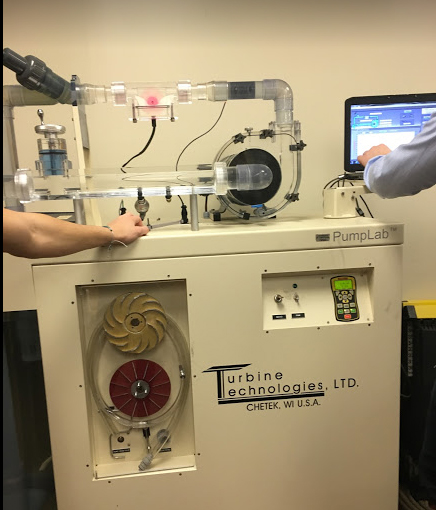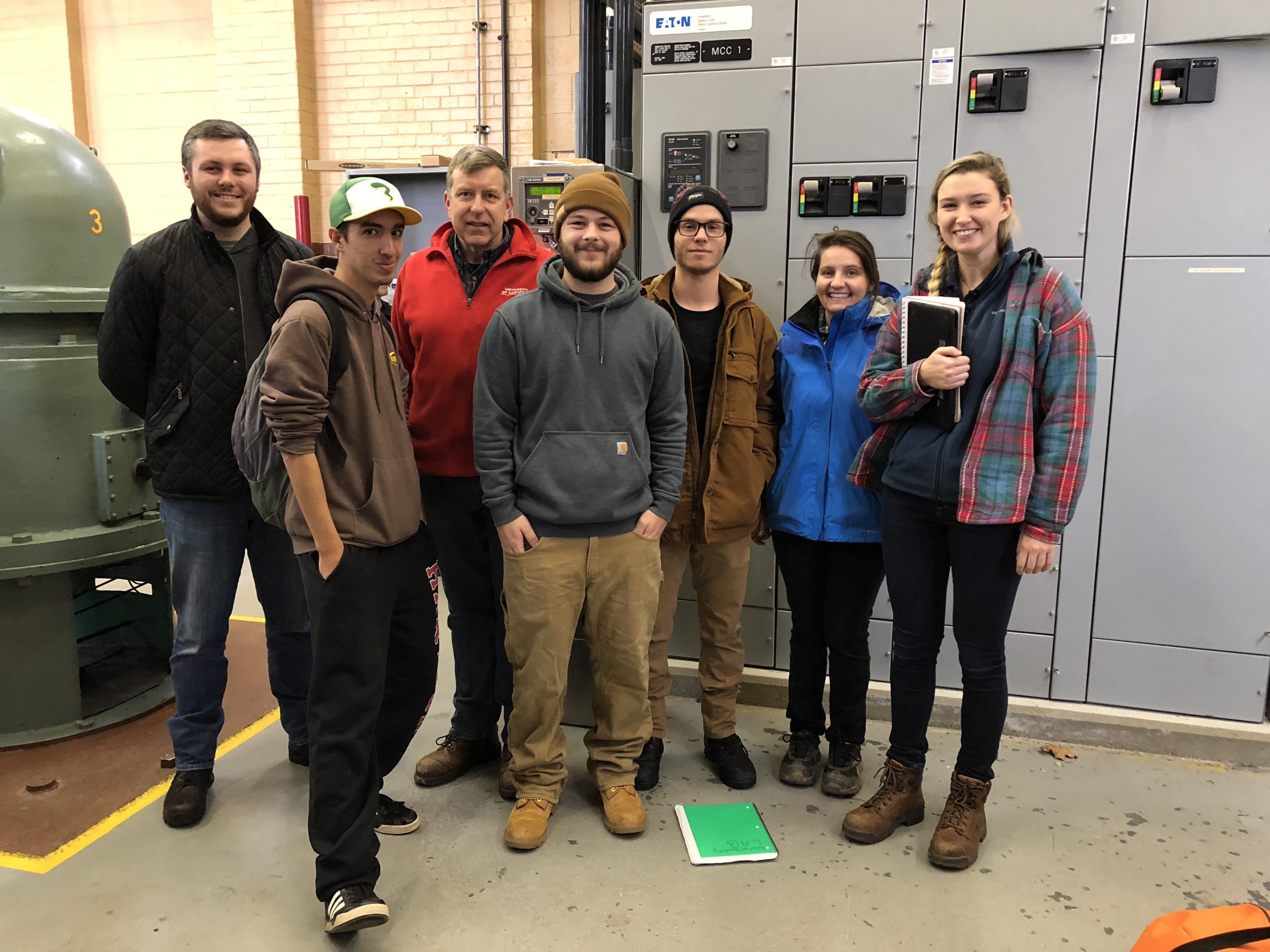Most people who work with pumps know there is a big difference between how a theoretical pump system works and how one really operates in the field. The professors at the University of Hartford recognize the need for engineering students to get hands-on ‘real world’ experience, so they have partnered with JKMuir, a local engineering and energy consulting firm specializing in water, wastewater, and industrial processes, to collaborate on an experiential learning project.
The students were on-site November 30th at the Chicopee Water Pollution Control Facilities in Massachusetts getting a “taste” of what it’s like to work with pumps in the real world. Under the guidance and supervision of Professor Todd Brown, P.E., and JKMuir’s engineers, Chelsea Conlon and Alex Rozen, the students had the opportunity to use JKMuir’s portable instrumentation to acquire data from operating pumps. Working with flow meters, pressure gauges, tachometers and other devices, the students saw how this instrumentation works in the field, and they learned how to get the data they needed to understand what happens in a pumping system.
“One of the most fun and rewarding aspects of being a professor at the University of Hartford is having the opportunity to push my students out of the classroom and into the field, meeting engineers and operators who are passionate about the water and wastewater industry,” declares Brown. “I am so grateful to my professional colleagues from the City of Chicopee and JKMuir who are enthusiastic about sharing with students!”
Using the simulated system at the University of Hartford, the students slowly closed the discharge valve and recorded head and flow at different points. Then they plotted the head and flow points on a graph to create the pump curve. Next, the students fully opened the discharge valve and slowly closed the suction valve to record head and flow at different points. They then used the head and flow points to create the Net Positive Suction Head (NPSH) curve.
“Professor Brown has gone above and beyond by creating a pump lab at the school for students to learn pump system fundamentals, prior to our scheduled time at the Chicopee Facilities,” explains Jennifer K. Muir, Founder and President of JKMuir.

In pump lab at the University of Hartford, the students practiced closing the suction valve. The partially closed valve formed air bubbles, showing the students a type of cavitation which can impact pump health and/or efficiency.
“It’s great for the students to learn the theoretical workings of a pump system, but then have the opportunity to go out into the field and use the portable instrumentation,” shares Conlon. “When you’re in the field, you really have to use critical thinking and problem solving in certain instances – for example, when a piece of instrumentation doesn’t necessarily fit on the specific piece of equipment, you have to figure out the best way to get the data you need, so learning that on-site is really beneficial to the students.”
For the sake of safety, the engineering students will watch Conlon and Rozen take electrical readings, as they have the specialized training and personal protection equipment. “It’s a positive experience for the students to see a technician suited up and following safety protocols while taking electrical readings,” states Rozen. “Throughout the testing, we took electrical readings and had the students use the head, flow, and kW readings to calculate the efficiency of the pump.”
When asked why JKMuir was collaborating with the University of Hartford on this project, Muir replied, “We are doing this because it is fun! Professor Brown comes from an engineering / consulting background and appreciates working with local engineers to expose his students to real-world experiences that resemble ‘on-the-job’ training. We like to work with students because it is a benefit to the industry as a whole when we can support universities in developing young professionals with this kind of expertise. We need young people entering the industry, and if they gain a background with pump-specific training, this type of ‘hands-on’ training makes them immediately valuable to their companies from day one!”
Follow this project online at @JK_Muir, on LinkedIn and Instagram.




